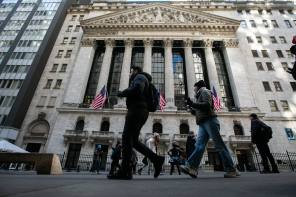There have been high-profile dividend cuts at firms such as Capita and the AA. But the problem for other firms, according to AJ Bell, may be that they have yet to cut.
Dividend forecasts have remained stable despite market weakness in the first quarter of 2018, meaning the yields on offer have pushed higher. The broker has doubts about the sustainability of these levels, noting that the 10 highest forecast yields now look “unquestionably high”. As Table 1 notes, these come to an average of 7.9 per cent, but the average predicted level of dividend cover – reflecting how much a company is paying back to shareholders in relation to its earnings – stands at 1.42.
Table 1: Dividend cover levels need to rise
| Persimmon | 9.3 | 1.13 |
| Centrica | 8.4 | 1.19 |
| Barratt Developments | 8.2 | 1.5 |
| Taylor Wimpey | 8.2 | 1.4 |
| SSE | 8 | 1.27 |
| Imperial Brands | 7.8 | 1.4 |
| Direct Line | 7.7 | 1.08 |
| Micro Focus | 7.5 | 2.04 |
| BT | 7 | 1.76 |
| Marks & Spencer | 6.8 | 1.46 |
| Average | 7.9 | 1.42 |
Source: AJ Bell. Copyright: Money Management
According to AJ Bell, the cover needs to be at least 2 to offer a margin of safety for dividend payments, in case of a downturn for a specific company or markets more generally. This should serve as a reminder to intermediaries that the sustainability of a dividend is arguably more important than the headline amount being offered. In the UK, this is a key consideration.
Ben Seager-Scott, director of investment strategy at Tilney, explains: “The UK remains a region with a relatively high dividend yield, but dividends are concentrated into a relatively small number of names.
“Aside from the risk of getting drawn into value traps or companies with unsustainable payout ratios, one of the other key points to highlight is that rising interest rates are generally not great for equity income, so there needs to be a compelling fundamental case as well.”
After years in which markets have trended upwards, some believe tighter monetary policy has led participants to focus more closely on a firm’s fundamental characteristics, meaning big reactions to stock-specific news have become more likely.
Last year, Architas investment manager Nathan Sweeney warned the approaching end of support from central banks meant “price action is hitting markets a lot more”.
But not all professional investors appear overly worried about such market movements – not until gilt yields rise considerably from their current level of 1.5 per cent, at least.
Guy Stephens, technical investment director for Rowan Dartington, explains: “We don’t see enough in the recent period of volatility to alter our normal source of equity dividend, which would normally have a substantial UK component due to the higher dividend expectation of the UK investor. We do not see any likelihood of reducing equity income until 10-year benchmark [bond] yields exceed 3 per cent.”











